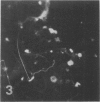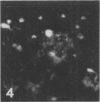Abstract
The intracheal inoculation of pigs with Haemophilus suis led to the production of Glasser's disease at every attempt without significant pulmonary involvement. Isolation of this organism from the experimental animals was possible only in the acute phase of the disease.
The indirect fluorescent antibody technique when applied to frozen sections of tissues obtained from the experimentally infected pigs at autopsy, revealed a few rod forms but mostly “round bodies” of H. suis in animals from which the organism was isolated, and “round bodies” only in the pigs from which the organism was not isolated.
Attention is drawn to the similarities between the lesions caused by H. suis and Mycoplasma hyorhinis, and to the confusion which may result therefrom. It is stressed that the laboratory diagnosis of these two diseases is complicated by the fact that both agents may not be isolated on the media commonly used in diagnostic laboratories. Both organisms necessitate the use of special media where the clinical and autopsy results indicate polyserositis and arthritis.
Full text
PDF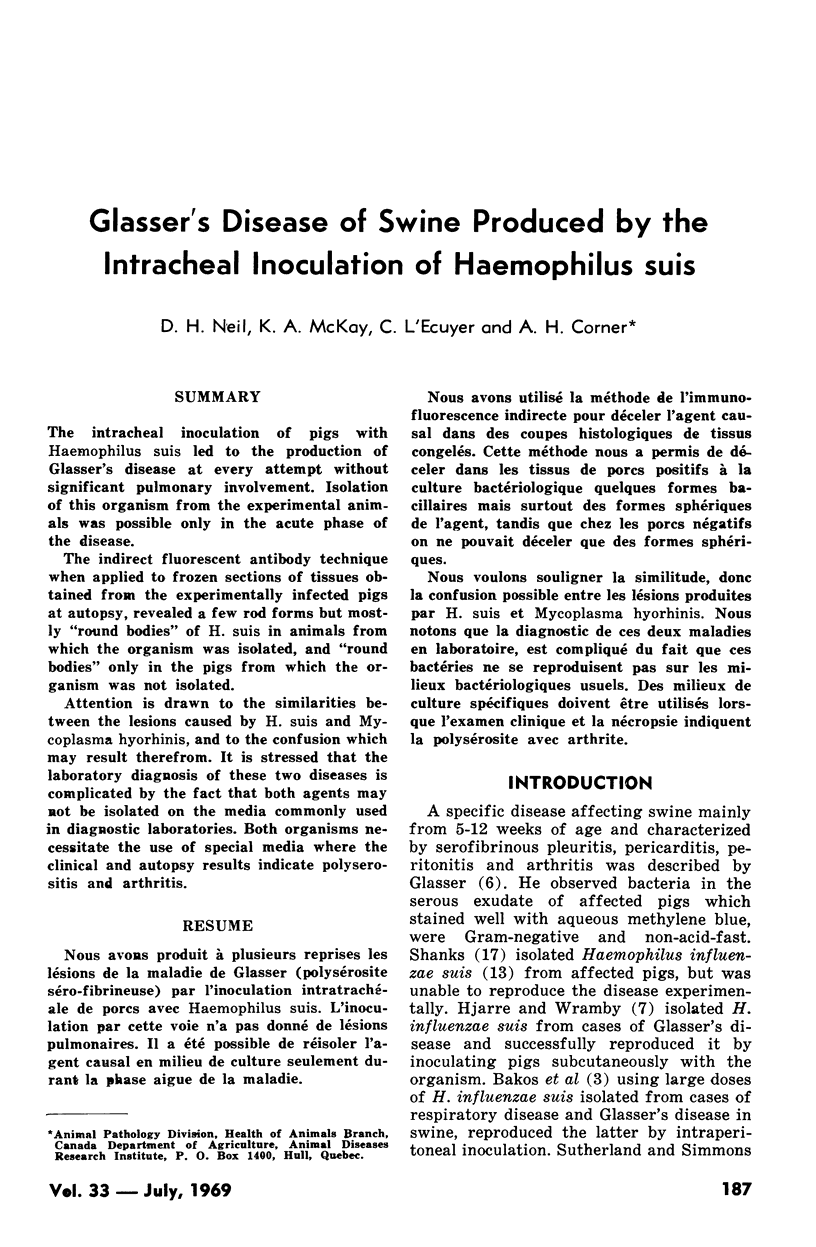
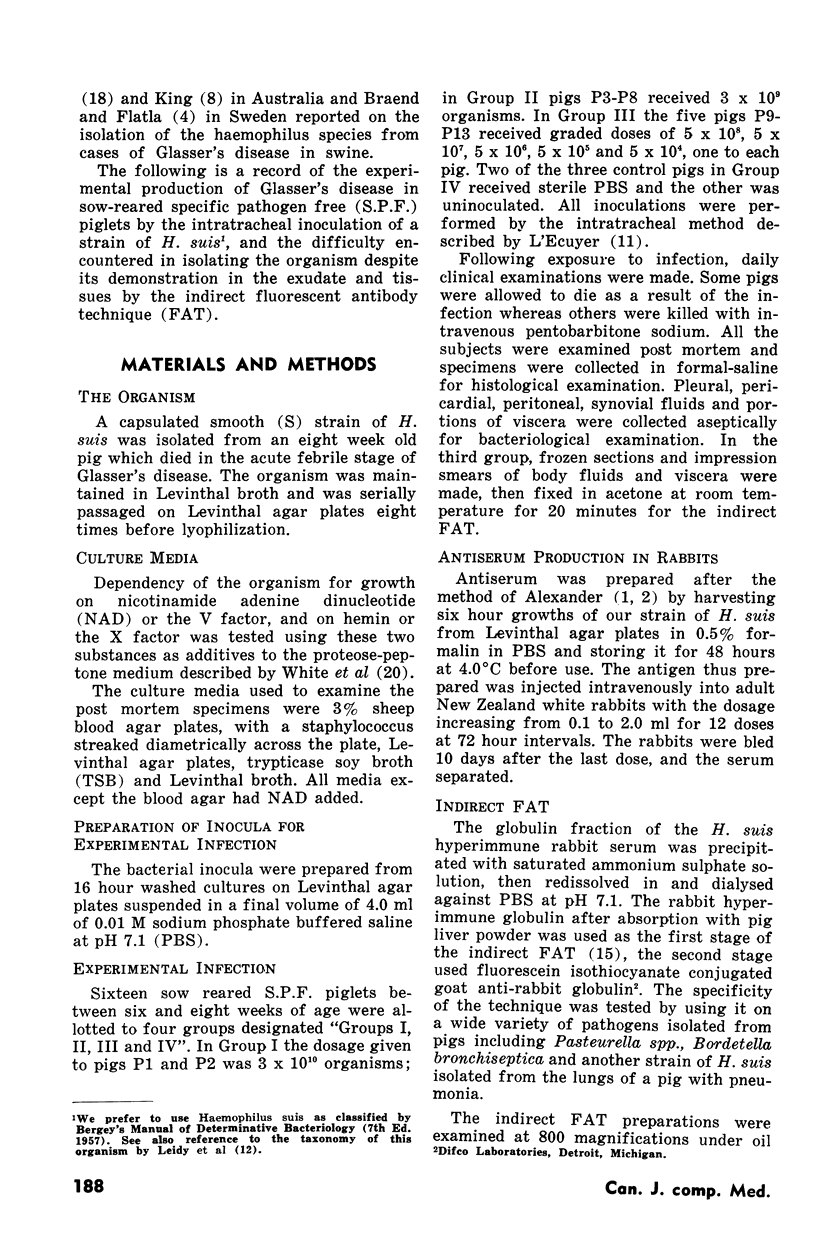
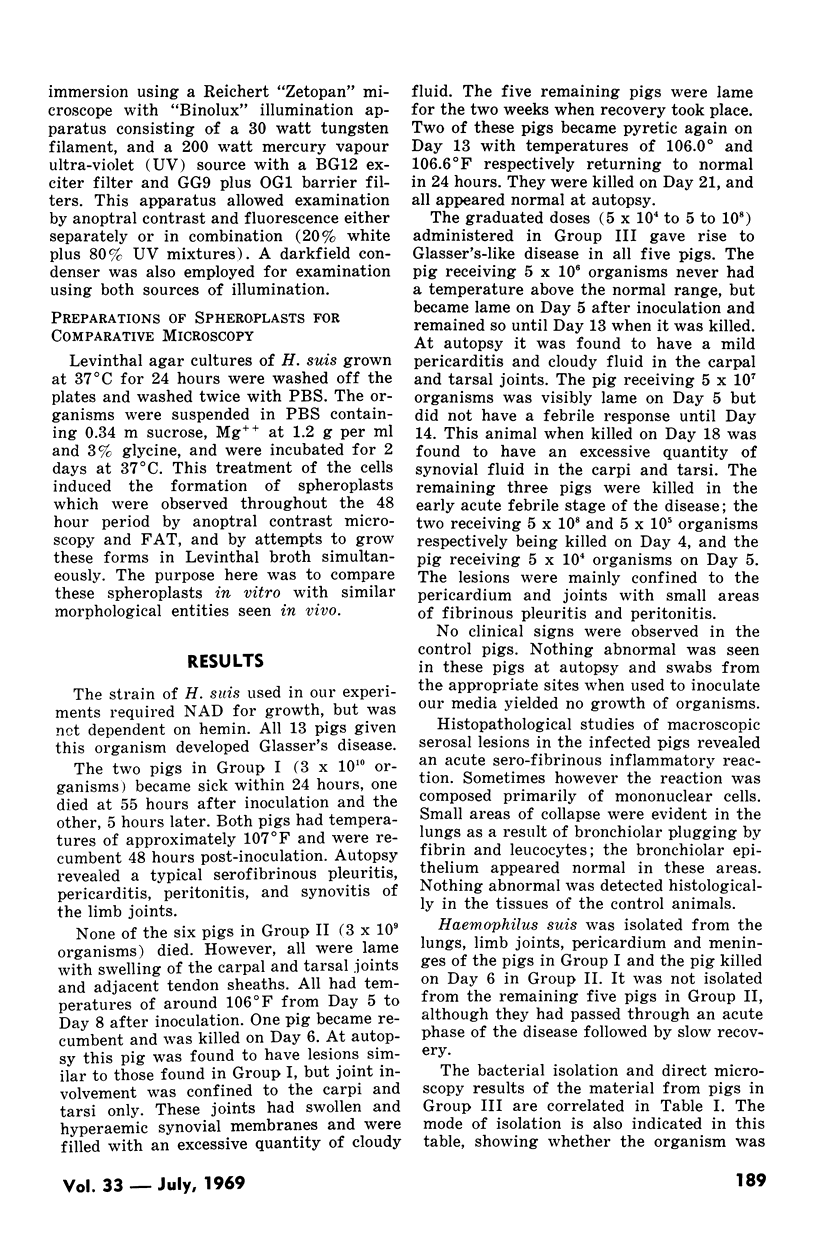
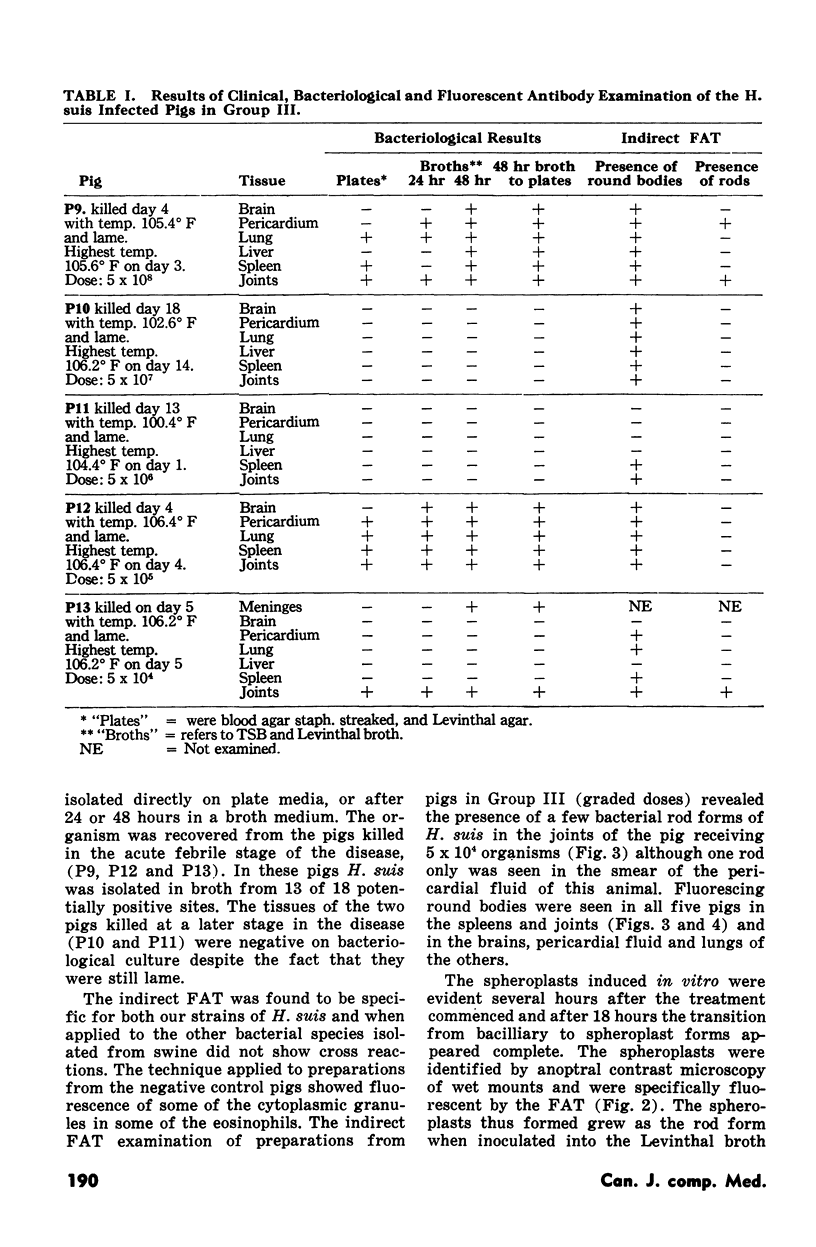
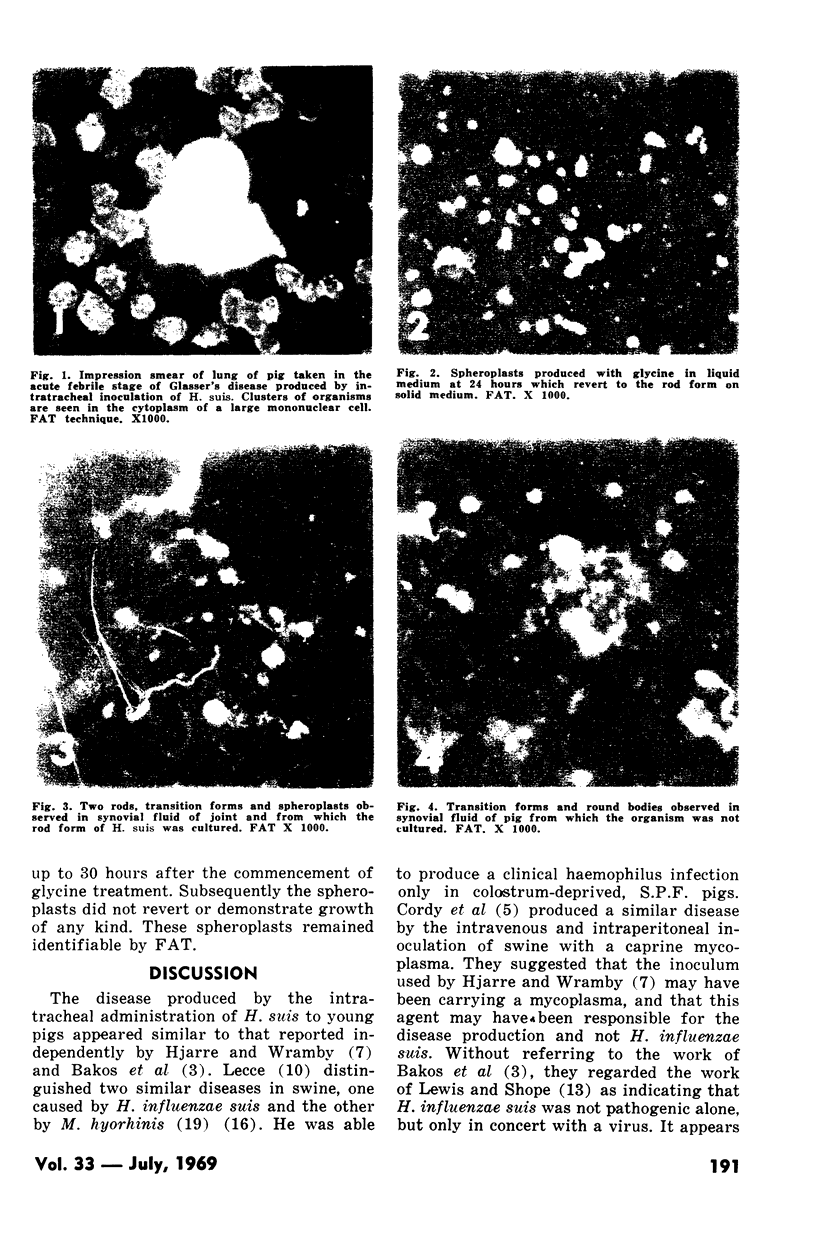
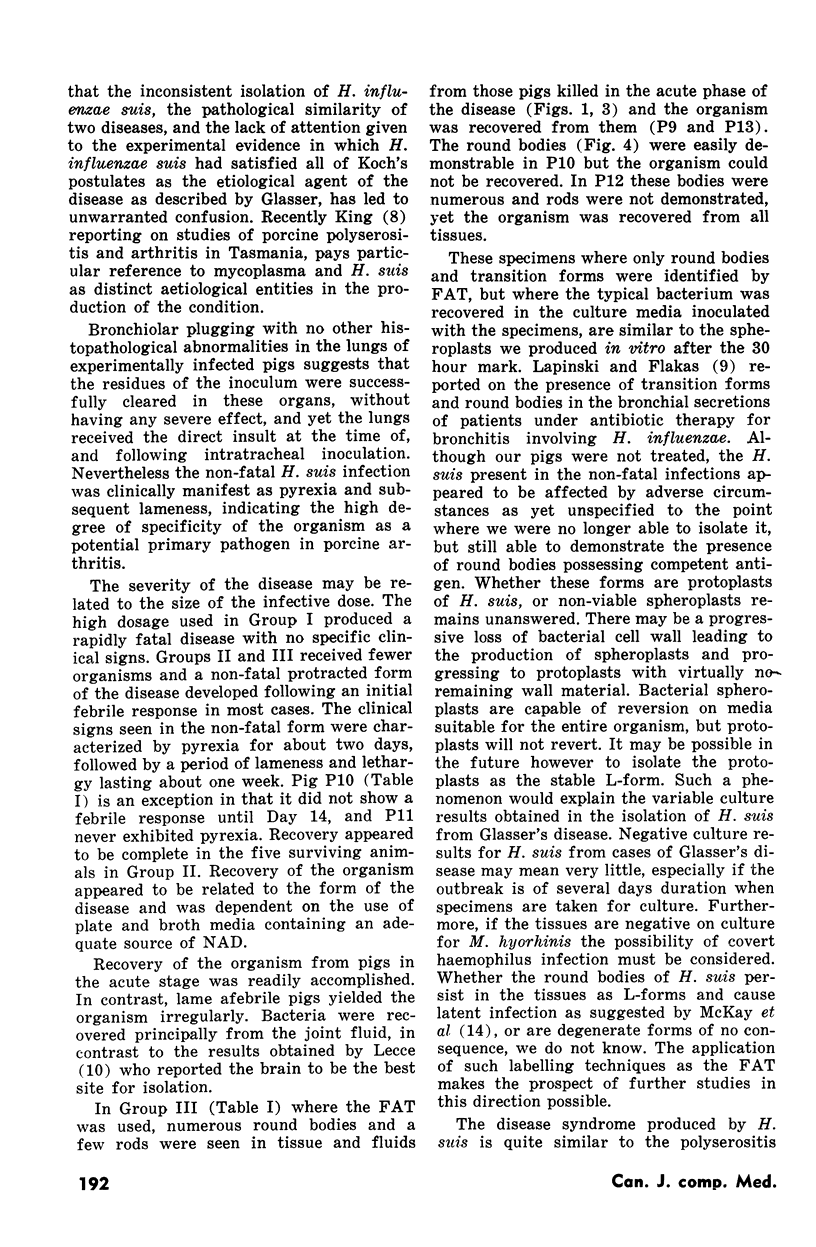
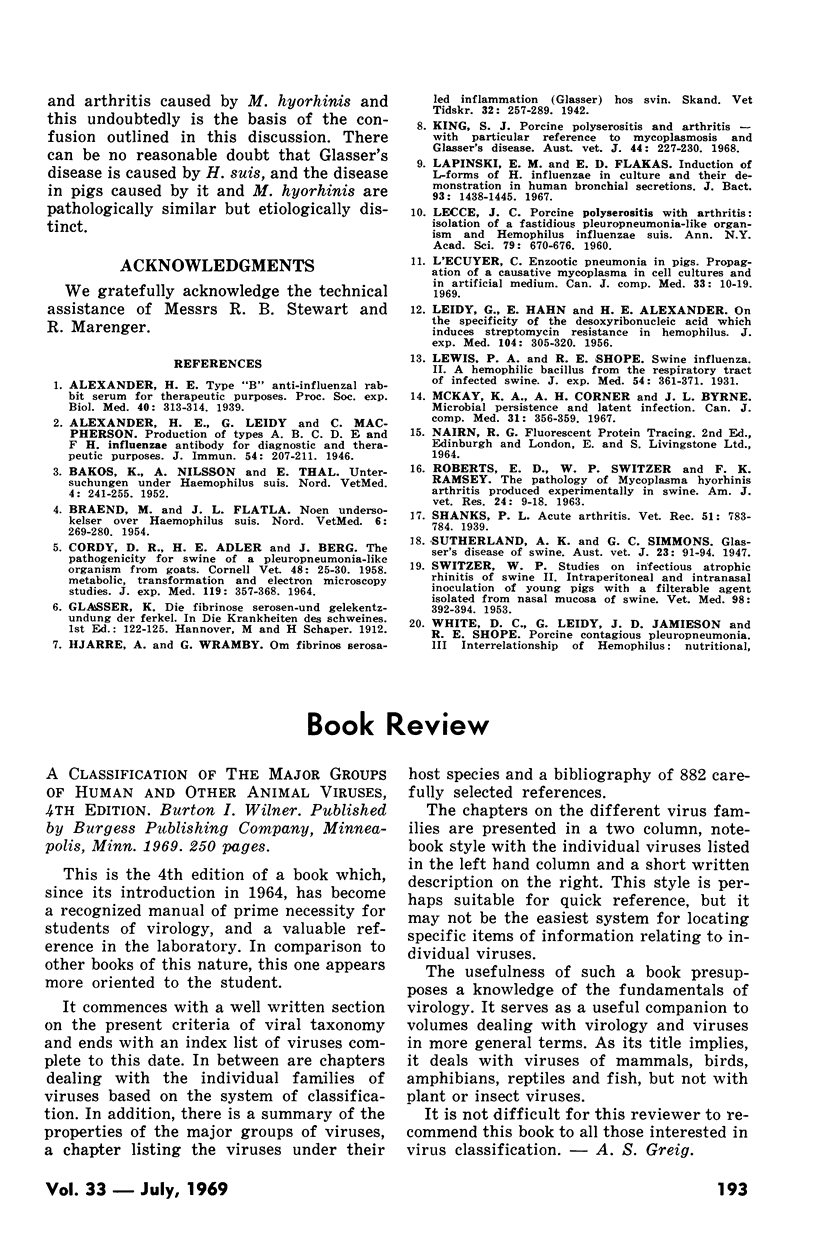
Images in this article
Selected References
These references are in PubMed. This may not be the complete list of references from this article.
- ALEXANDER H. E., HAHN E., LEIDY G. On the specificity of the desoxyribonucleic acid which induces streptomycin resistance in Hemophilus. J Exp Med. 1956 Sep 1;104(3):305–320. doi: 10.1084/jem.104.3.305. [DOI] [PMC free article] [PubMed] [Google Scholar]
- CORDY D. R., ADLER H. E., BERG J. The pathogenicity for swine of a pleuropneumonialike organism from goats. Cornell Vet. 1958 Jan;48(1):25–30. [PubMed] [Google Scholar]
- King S. J. Porcine polyserositis and arthritis--with particular reference to mycoplasmosis and Glasser's disease. Aust Vet J. 1968 May;44(5):227–230. doi: 10.1111/j.1751-0813.1968.tb09090.x. [DOI] [PubMed] [Google Scholar]
- L'Ecuyer C. Enzootic pneumonia in pigs: propagation of a causative mycoplasma in cell cultures and in artificial medium. Can J Comp Med. 1969 Jan;33(1):10–19. [PMC free article] [PubMed] [Google Scholar]
- LECCE J. G. Porcine polyserositis with arthritis: isolation of a fastidious pleuropneumonialike organism and Hemophilus influenzae suis. Ann N Y Acad Sci. 1960 Jan 15;79:670–676. doi: 10.1111/j.1749-6632.1960.tb42741.x. [DOI] [PubMed] [Google Scholar]
- Lapinski E. M., Flakas E. D. Induction of L forms of Haemophilus influenzae in culture and their demonstration in human bronchial secretions. J Bacteriol. 1967 Apr;93(4):1438–1445. doi: 10.1128/jb.93.4.1438-1445.1967. [DOI] [PMC free article] [PubMed] [Google Scholar]
- ROBERTS E. D., SWITZER W. P., RAMSEY F. K. Pathology of the visceral organs of swine inoculated with Mycoplasma hyorhinis. Am J Vet Res. 1963 Jan;24:9–18. [PubMed] [Google Scholar]





